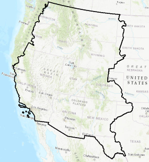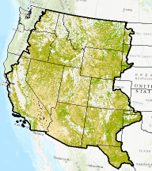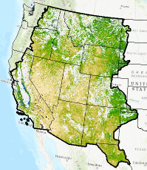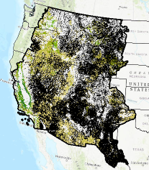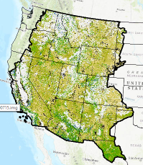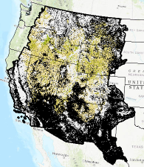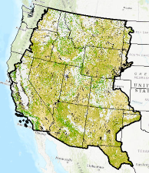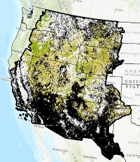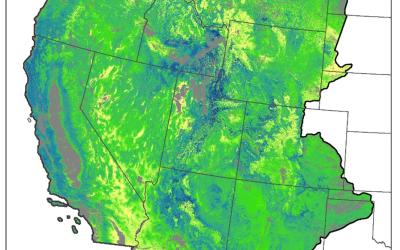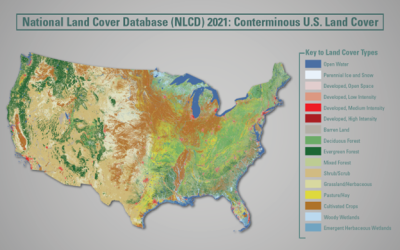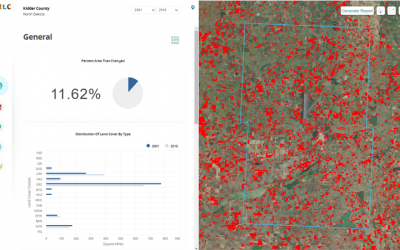Data
Use the interface below to filter and download available NLCD products. Click (here) for NLCD Science Research Products which offer more comprehensive delineation of shrub and grass classes and information about change disturbance. For access to dynamic MRLC viewer applications and tools, click (here).
Dataset Type
Region
Time Period
Land Cover
The National Land Cover Database (NLCD) provides nationwide data on land cover and land cover change at a 30m resolution with a 16-class legend based on a modified Anderson Level II classification system. NLCD 2021 represents the latest evolution of NLCD land cover products focused on providing innovative land cover and land cover change data for the Nation. NLCD 2021 offers 9 integrated epochs of land cover for years 2001, 2004, 2006, 2008, 2011, 2013, 2016, 2019, and 2021. chs (2001 – 2021) and are directly comparable across the full time series and suitable for multi-temporal analysis. The NLCD 2021 release is update based, so the Land Cover and Impervious Surface products released in 2019 are unchanged and can be used directly with NLCD 2021. Science products and the change index will need to be reacquired to contain the additional 2021 change. Specific map products include:Developed classes in these years are directly derived from percent developed impervious surface and include a descriptor label that identifies the type of each impervious surface pixel. The NLCD Land Cover change index combines information from all years of land cover change and provides a simple and comprehensive way to visualize change from all 9 dates of land cover in a single layer. The change index was designed to assist NLCD users to understand complex land cover change with a single product. NLCD 2021 does not yet contain updated products for Alaska, Hawaii and Puerto Rico. (Read More)
RCMAP – Basemap (2016)
RCMAP base component products characterize the percentage of each 30-meter pixel in the Western United States covered by shrub, herbaceous, bare ground, litter, sagebrush, big sagebrush and annual herbaceous, along with estimating shrub height and sagebrush height. These products have been produced by USGS in collaboration with the Bureau of Land Management. Component products are designed to be used individually or combined to support a broad variety of applications. Please note these new Revised (071520) rangeland products will differ from the first generation of circa 2016 fractional cover maps, a more aggressive masking of tree canopy cover was applied to each rangeland component. Specifically, we have lowered the tree canopy cover threshold for exclusion from 40 to 25%. For pixels with 1-25% tree canopy cover we ensured that our primary components (shrub, herbaceous, litter, and bare ground) cover summed to 100% when added with the tree canopy. And, for the secondary components (sagebrush, big sagebrush, sagebrush height and shrub height) we reconciled to the primary component (shrub), excluding any pinyon-juniper woodlands. (Read More)











